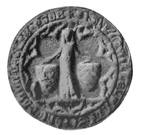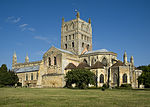Swilgate
Cricket grounds in GloucestershireEnglish cricket ground stubsSports venues completed in 1893TewkesburyUse British English from February 2023

Swilgate is a cricket ground in Tewkesbury, Gloucestershire. The first recorded match on the ground was in 1893, when Tewkesbury played Handsworth Wood.Gloucestershire played two List A matches at the ground, the first of which saw them play Yorkshire in the 1972 John Player League. The second and final List-A match at the ground came the following season in the same tournament when Gloucestershire played Lancashire.Gloucestershire Women used the ground in the 2010 Women's County Championship Division Five South and West against Wiltshire Women. In local domestic cricket, the ground is the home venue of Tewkesbury Cricket Club.
Excerpt from the Wikipedia article Swilgate (License: CC BY-SA 3.0, Authors, Images).Swilgate
Swilgate Road,
Geographical coordinates (GPS) Address Nearby Places Show on map
Geographical coordinates (GPS)
| Latitude | Longitude |
|---|---|
| N 51.9908 ° | E -2.15703 ° |
Address
Swilgate Road
GL20 5PJ , Priors Park
England, United Kingdom
Open on Google Maps










